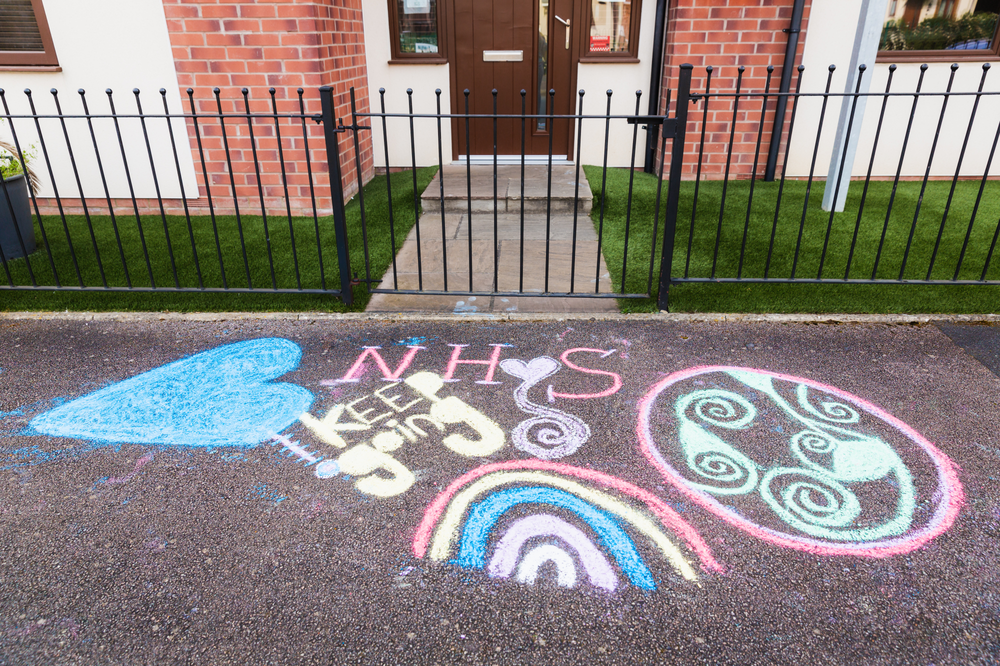Triple Jeopardy: women of colour, austerity and the cost-of-living crisis
The cost-of-living crisis dominates our headlines and anchors much of our political discussions, and yet there is still little understanding of how the experiences of this crisis intersect with race, gender and class.
Far from being ‘in this together', working class ethnic minority women, including migrants and refugees, are among those worst affected by this evolving crisis and continue to be harmed by the structural racism that underpins our economic and political systems.
Three ways cuts, taxes and inaction harm working class ethnic minority women most
While crises like the pandemic and cost of living are universal, some inequalities are so systemic that certain minority communities are likely to be impacted first, hardest and in multiple ways, which is why certain minority ethnic communities were among the hardest hit by the pandemic, in death toll and economic fallout, and are now falling faster into poverty as the cost of living soars.
Importantly, there is little understanding that these outcomes are not just incidental or unfortunate outcomes of an unprecedented, unpredictable and uncontrollable situation; they are directly related to long term and deliberate policies of austerity and the government’s inaction on persistent and deepening inequalities.
1. Cuts to public services have cut support for women of colour
Aggressive cuts to public services have stripped away many of the services that would have supported women of colour.
2. More income has been taken from women of colour
Regressive welfare measures have taken more income away from women of colour than their white or male peers.
3. Women of colour are still forced into the least secure, lowest paid jobs
Persistent and unresolved issues of labour market inequality and employment discrimination continue to see women of colour in the lowest paid and most insecure work in our economy.
Together, these create a toxic triple jeopardy that leaves working class women of colour vulnerable to the worst excesses of this ‘cost-of-living crisis’.
“It is no exaggeration to say that the racialised and gendered violence of austerity and the cost-of-living crisis will be fatal for working class ethnic minority and migrant women.”
Shabna Begum, Head of Research at Runnymede Trust
Trapped below Living Wage
- In almost every minority ethnic group, women are more likely than men to earn below the Living Wage.
- Women of colour are almost twice as likely than white men to be on zero-hour contracts and work in jobs that provide no fixed wage, but offer work as and when.
- These women have little to no capacity to build up any wealth assets or savings.
- They are more likely to experience ‘deep poverty’ which is everyday material deprivation, food insecurity and fuel poverty, at far higher rates than their white peers.
(anti)social (in)security
Our report, ‘Falling Faster amidst the cost of living crisis’ outlined how over the last decade, changes to the tax and social security system have been highly regressive, racialised and gendered in their impacts.
Using data published by the Department of Work and Pensions (DWP), we were able to show that in real terms...
- White families now receive £454 less a year on average in cash benefits than they did a decade ago.
- But this rises to £806 less a year for Black and minority ethnic families.
- And even higher to £1,635 for Black families.
- Black and minority ethnic women have been some of the worst affected and currently receive £1,040 less than they did a decade ago.
“Cuts to health and social care have meant that responsibilities for social and childcare have retreated into domestic spaces which has impacted working class women generally, but compounded inequalities particularly for women of colour.”
Shabna Begum, Head of Research at Runnymede Trust
Cuts to social security
In another report, ‘Intersecting inequalities’, cuts to social security were predicted to total £37bn a year based on budgetary modelling running to 2020.
Black and minority ethnic women were thought to be more likely to be affected by cuts to benefits and tax credits because they are more likely to be living in poverty, more likely to be living with dependent children, and more likely to be living in large families.
The study found that...
- Asian women in the poorest third of households would have lost on average 19% of their income by 2020 (over £2200) compared to if the policies in place in May 2010 had continued to 2020.
- Black women in the poorest households would have lost on average 14% of their income (over £2000 a year).
- Black and Asian lone mothers, respectively, would have lost £4,000 and £4,200 a year on average by 2020 from the changes implemented since 2010, about 15% and 17% of their net income.
- At the same time, it has been highlighted that some of the tax cuts that were implemented and more recently proposed, have disproportionately benefited rich, white men.
The stripping away of our social security system has left some of the most vulnerable groups in our communities without the support that enables them to live and thrive.
Lower levels of spending on public services
The impacts of austerity have also manifested as lower levels of spending on public services. Central government funding for local government, which is responsible for delivering a range of essential local services fell.
- Funding for essential services fell by over 50% between 2010/11 and 2015/16.
- And then by a further 30.6% in 2017/18.
- A third of referrals to refuges (155 women and 103 children) are being turned away per day.
- Female lone parents, who make up 92% of all lone parents and in which Black women are overrepresented, were predicted to have lost on average services worth over £4,900 (over 10% of their standard of living) per year.
Public services stripped back
Of referrals to refuges (155 women and 103 children) are being turned away per day.
Funding for essential services fell by over 50% between 2010/11 and 2015/16. And then by a further 30.6% in 2017/18.
Female lone parents (92% of all lone parents and in which Black women are overrepresented) were predicted to have lost on average services worth over £4,900 (over 10% of their standard of living) per year.
Cuts to schools, the NHS, legal aid, social care and local authority spending
The kind of services that were stripped back or ceased to function include schools, the NHS, legal aid coverage, social care for older and disabled people, local authority spending - particularly for Children’s Centres and youth clubs - and specialist refuges.
It is widely accepted that these public services are more likely to have women as their users; the cuts inflicted, therefore, have disproportionately affected women, who are more likely to be primary carers for their children and be responsible for other family members who need services. For instance, female lone parents, who make up 92% of all lone parents and in which Black women are overrepresented, were predicted to have lost on average services worth over £4,900 (over 10% of their standard of living) per year. Cuts to health and social care have meant that responsibilities for social and childcare have retreated into domestic spaces which has impacted working class women generally, but compounded inequalities particularly for women of colour.
Shutterstock

Losing at work
The double impact of regressive tax/benefit measures and the aggressive cuts to public spending are worsened when we recognise that persistent inequalities that are embedded into our labour markets have been allowed to flourish and in many cases, worsen, during this same period.
Our Colour of Money report highlighted the persistence of inequalities related to higher unemployment rates and ‘occupational segregation’ in low-paid, insecure and poor progression jobs for Black and minority ethnic people.
“The Living Wage Foundation found that the pandemic revealed not just that minority ethnic workers were disproportionately exposed to the health and economic risks posed by the health crisis, but that they suffered the worst excesses of the economic fallout including a greater average earnings loss.”
Shabna Begum, Head of Research at Runnymede Trust
The lack of a secure and liveable income
In their report, A Living Wage Matters , the Living Wage Foundation found that the pandemic revealed not just that minority ethnic workers were disproportionately exposed to the health and economic risks posed by the health crisis, but that they suffered the worst excesses of the economic fallout including a greater average earnings loss. They highlighted that some minority ethnic groups face a much greater risk of earning less than the real Living Wage than others, and that in almost every minority ethnic group, women are more likely than men to earn below the Living Wage.

“The systemic and structural racism of the current economic and political systems produce deeply destructive patterns of inequality. This hides and marginalises the labour and care that women generally, and working class ethnic minority women [in particular] provide and at great cost to themselves and their families and communities.”
Shabna Begum, Head of Research at Runnymede Trust
In addition to earning less, since the 2008 financial crisis there has been a sharp increase in the use of zero-hour contracts, as part of a wider shift towards precarious employment contracts which has left 3.6 million workers in the UK in insecure work.
Findings in a report from the Trade Union Congress and ROTA in 2021 highlight that women of colour are almost twice as likely than white men to be on zero-hour contracts and work in jobs that provide no fixed wage, but offer work as and when. Such contracts trap women into low pay and insecure work, rendering them unable to plan their lives and futures.
The lack of a secure and liveable income means that these women have little to no capacity to build up any wealth assets or savings, meaning that they now have little financial resilience to be able to weather the storms ahead; they are more likely to experience ‘deep poverty’ which is everyday material deprivation, food insecurity and fuel poverty, at far higher rates than their white peers.
A rear-view mirror to the future?
Since the 2008 global financial crisis the UK government has presented austerity as measures undertaken for the public and national good; the narrative was that these measures were essential to ensure a stable economic future and a leaner, more streamlined state infrastructure that was resilient to global crises.
It is important to note that discourses around ‘crisis’ manufacture a sense that these unequal impacts are an aberration of an otherwise functioning system.
Sadly, the truth is that whether in ‘crisis’ or ‘recovery’ mode, the systemic and structural racism embedded within our economic and political systems produce deeply destructive patterns of inequality that hide and marginalise the labour and care that women generally, and working class women more so, provide at a great cost.
Post pandemic and now in the midst of this cost of living crisis we are hearing calls for austerity 2.0. This is deeply worrying given the existing and growing evidence that such policies lead to a greater degree of excess female deaths among more deprived populations.
It is no exaggeration to say that the racialised and gendered violence of austerity and the cost-of-living crisis will be fatal for working class ethnic minority and migrant women, who are currently clinging to subsistence.
The UK government must recognise and respond to these systemic forms of violence in a way that acknowledges the scale of the problem and the government’s own responsibility to direct both funding and political change to address these issues for those most vulnerable in society.

This 16 Days of Activism Against Gender-based Violence we're proud to host this blog from Runnymede Trust.
